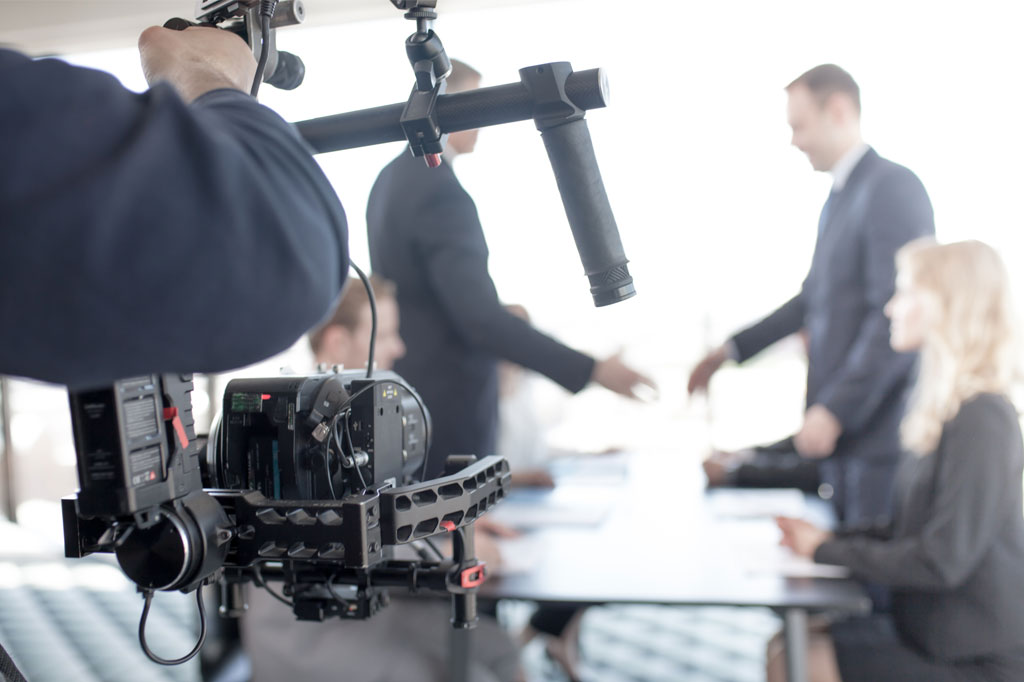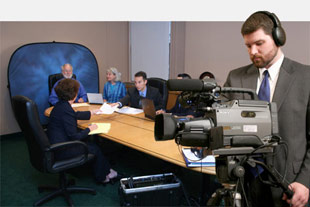Looking Into the Devices of Lawful Videography: Unveiling Its Procedure in Shielding Genuine Aesthetic Statement for Judicial Process
In the realm of judicial proceedings, the role of lawful videography stands as a cornerstone in protecting and providing aesthetic evidence. As technology remains to advance, the mechanisms behind legal videography have become significantly complex, providing a crucial layer of credibility to testaments caught on video clip. By delving into the operational ins and outs of legal videography, one can uncover the thorough processes that guard the integrity of aesthetic proof provided in court rooms - Legal Videography. This expedition not only clarifies the historical development of legal videography however additionally means the future patterns that may even more reinvent just how visual statements are maintained in the realm of justice.
Historic Development of Legal Videography
Analyzing the historic development of lawful videography reveals a considerable improvement in the catching and presentation of visual evidence within the legal landscape. In the past, lawful proceedings heavily depended on created pictures and records to document occasions and give evidence. Nevertheless, with the development of video clip technology, the legal market experienced a paradigm shift in how visual testimony was captured and provided.
The advancement of legal videography can be mapped back to the late 20th century when innovations in video clip recording tools made it much more obtainable for use in courts. This technological innovation not only boosted the precision and integrity of visual evidence however additionally changed the method instances existed to discretionary (Legal Videography). Lawyers started to acknowledge the persuasive power of video recordings in conveying feelings, subtleties, and non-verbal cues that created transcripts or photos alone can not record successfully

Technology Improvements in Video Clip Paperwork
What crucial technological innovations have revolutionized video clip paperwork in the lawful area? The legal field has actually seen substantial improvements in video clip paperwork innovation that have enhanced the credibility and integrity of visual evidence in judicial procedures. One of the essential advancements is high-def (HD) video clip recording abilities, which give crystal-clear images and sharp details that are critical for accurately capturing testaments, facial expressions, and various other aesthetic signs. In addition, the assimilation of timestamping and metadata functions in video documentation devices has allowed precise documents of when and where the video was videotaped, making certain the stability of the proof offered in court.
Furthermore, improvements in video clip security and watermarking technologies have actually boosted the protection and tamper-proof nature of video proof, safeguarding it versus unapproved changes or meddling. Moreover, the advent of cloud storage space options and remote accessibility abilities has structured the storage, retrieval, and sharing of video clip proof, assisting in seamless partnership among legal specialists and guaranteeing reliable accessibility to crucial visual testaments when needed. These technological improvements in video clip paperwork have actually definitely reinvented the lawful area, enhancing the accuracy, reputation, and admissibility of aesthetic proof in judicial process.
Duty of Lawful Videographers in Court Settings
The evolution of video documents modern technology in the lawful area has actually demanded a crucial duty for lawful videographers in court settings, making certain the honesty and integrity of aesthetic testaments offered during judicial procedures. Legal videographers play a fundamental function in capturing and preserving exact visual proof that can be essential in court cases. Their duty includes establishing tools, taping process, and producing top notch video click reference clips that properly reflect the occasions in the courtroom.
Furthermore, legal videographers commonly work carefully with lawful teams to make sure that the video evidence straightens with the instance's demands and can be properly presented in court to support the legal disagreements being made. In general, the duty of lawful videographers in court room setups is essential in supporting the principles of justice and guaranteeing the openness of legal proceedings. Legal Videography.

Ensuring Admissibility and Honesty of Video Clip Evidence
To keep the credibility of aesthetic evidence offered in lawful process, guaranteeing the admissibility and stability of video clip proof is a vital obligation for legal videographers. Admissibility describes the approval of proof by the court, and for video evidence to be permissible, it has to meet certain criteria. Lawful videographers play a vital role in making sure that the videos they record comply with the policies of proof, such as reliability, relevance, and credibility.
Stability of video clip proof includes preserving the originality and accuracy of the video footage from the moment it is tape-recorded till it exists in court. This consists of More Info securely keeping the video documents, recording the chain of safekeeping, and stopping any tampering or alterations. Legal videographers must adhere to stringent procedures to assure the integrity of the video clip proof and protect against any type of difficulties to its authenticity.
Future Trends in Legal Videography
Offered the boosting reliance on innovation in lawful procedures, lawful videographers are poised to embrace ingenious innovations forming the future of aesthetic testament capture and presentation. One of the noticeable patterns imminent is the combination of virtual truth (VR) and boosted truth (AR) innovations right into legal videography. These modern technologies have the possible to revolutionize how visual proof is presented in court rooms, allowing juries and courts to submerse themselves in the scene of the crime or case.
Moreover, the use of artificial knowledge (AI) formulas for video clip analysis is anticipated to streamline the process of examining and evaluating big quantities of video clip footage. AI can aid in recognizing essential moments, anomalies, and patterns within video review clips, enhancing the performance of lawful investigations.

Final Thought
Finally, legal videography has played a vital role in giving genuine visual evidence for judicial procedures. With technological innovations and the competence of lawful videographers, the integrity and admissibility of video clip proof are made sure in courtroom setups. As lawful videography remains to advance, it will be vital to support criteria that maintain the precision and reliability of aesthetic statement for the future of legal procedures.
Checking out the historical development of lawful videography discloses a significant change in the catching and presentation of aesthetic evidence within the legal landscape.The evolution of video clip documents technology in the legal area has actually necessitated a crucial duty for legal videographers in court setups, making sure the stability and dependability of aesthetic statements presented throughout judicial procedures. In addition, legal videographers frequently work very closely with legal groups to ensure that the video clip evidence aligns with the case's needs and can be effectively presented in court to support the lawful disagreements being made.To maintain the trustworthiness of aesthetic evidence presented in lawful procedures, making certain the admissibility and stability of video clip proof is an essential duty for legal videographers. As legal videography proceeds to evolve, it will be important to maintain requirements that maintain the precision and dependability of aesthetic testimony for the future of legal proceedings.